Are you new to the world of cannabis? Are you interested in using THC, but are wary of the potential side effects? Read this guide to discover everything you need to know about THC, the many different forms it can be found in, how to dose it, and more in order to have a safe and enjoyable experience.
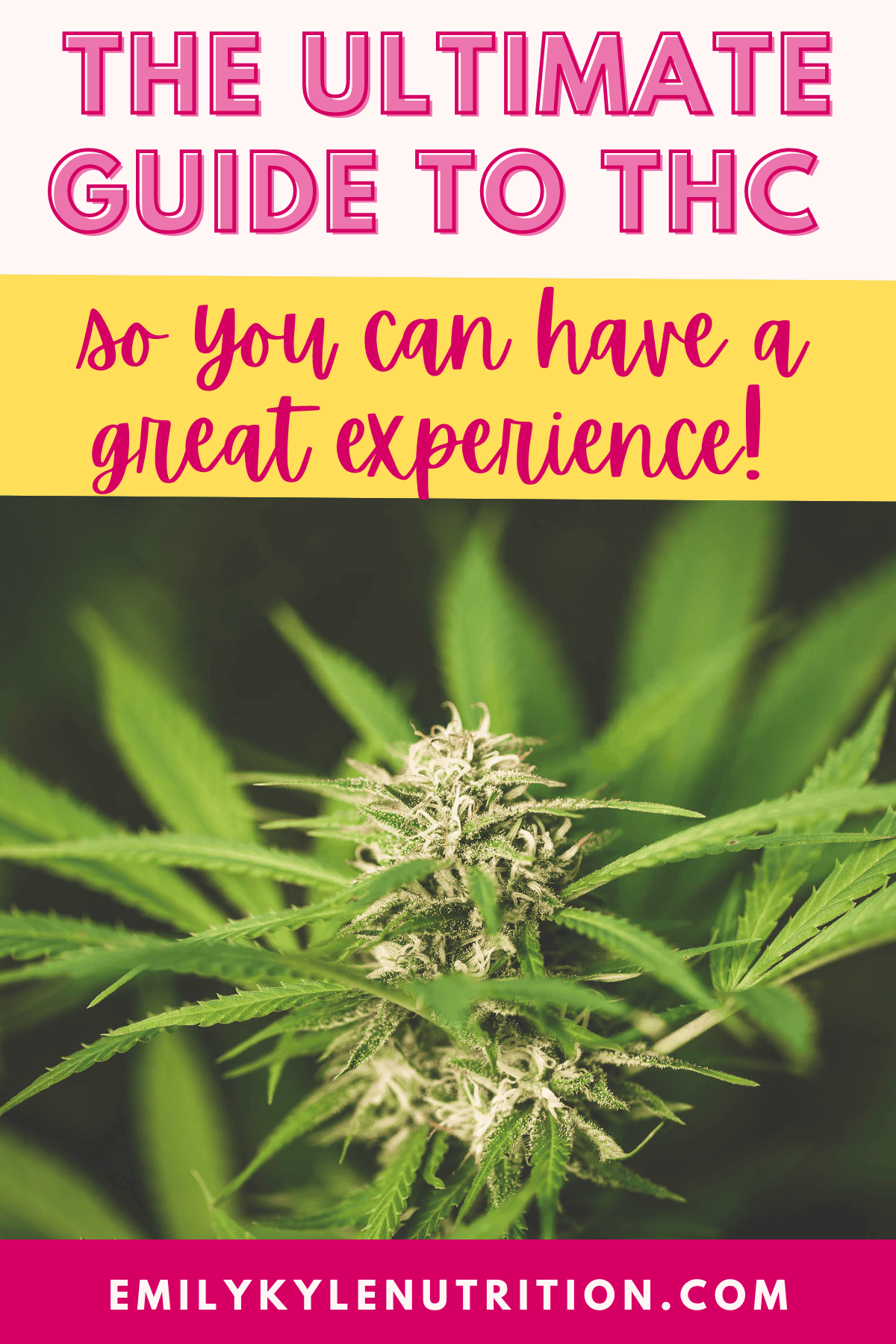
Table of Contents
Article Features
- The positive health benefits associated with THC
- The potential side effects and how to dose appropriately
- Want to make it easy? Shop my complete line of high-quality cannabis products and have them delivered directly to your door. Now shipping across the US!
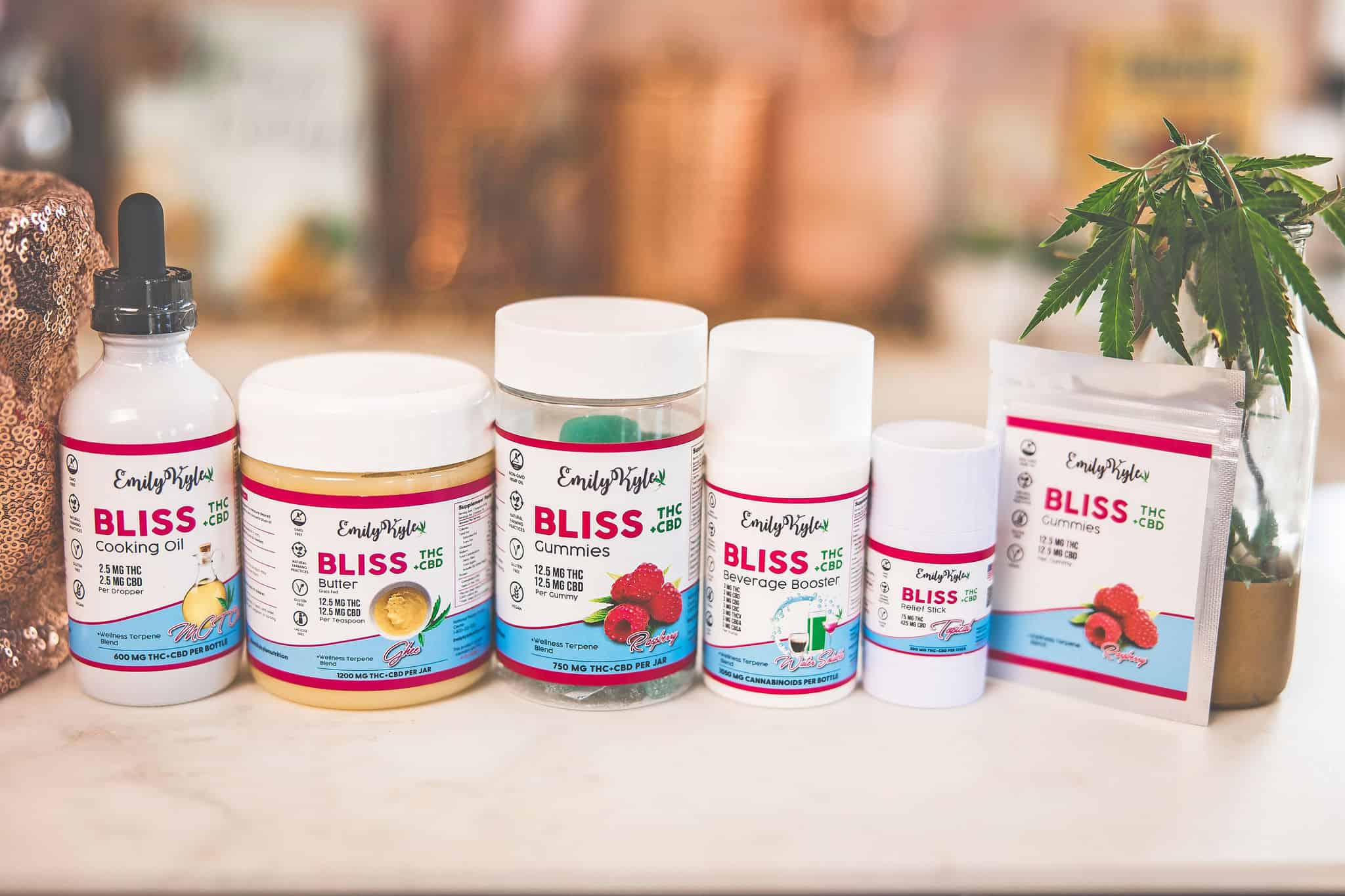
Why You Will Love This Guide
Following the legalization of cannabis in several states, people are becoming more curious to know more about their options.
Members of my Well With Cannabis Community know that cannabis consists of two common compounds: tetrahydrocannabinol (THC) and cannabidiol (CBD).
These compounds have significant benefits and potential side effects that are important to be aware of.
In this guide, I will walk you through everything you need to know about THC, its positive benefits, side effects, and how to use it.
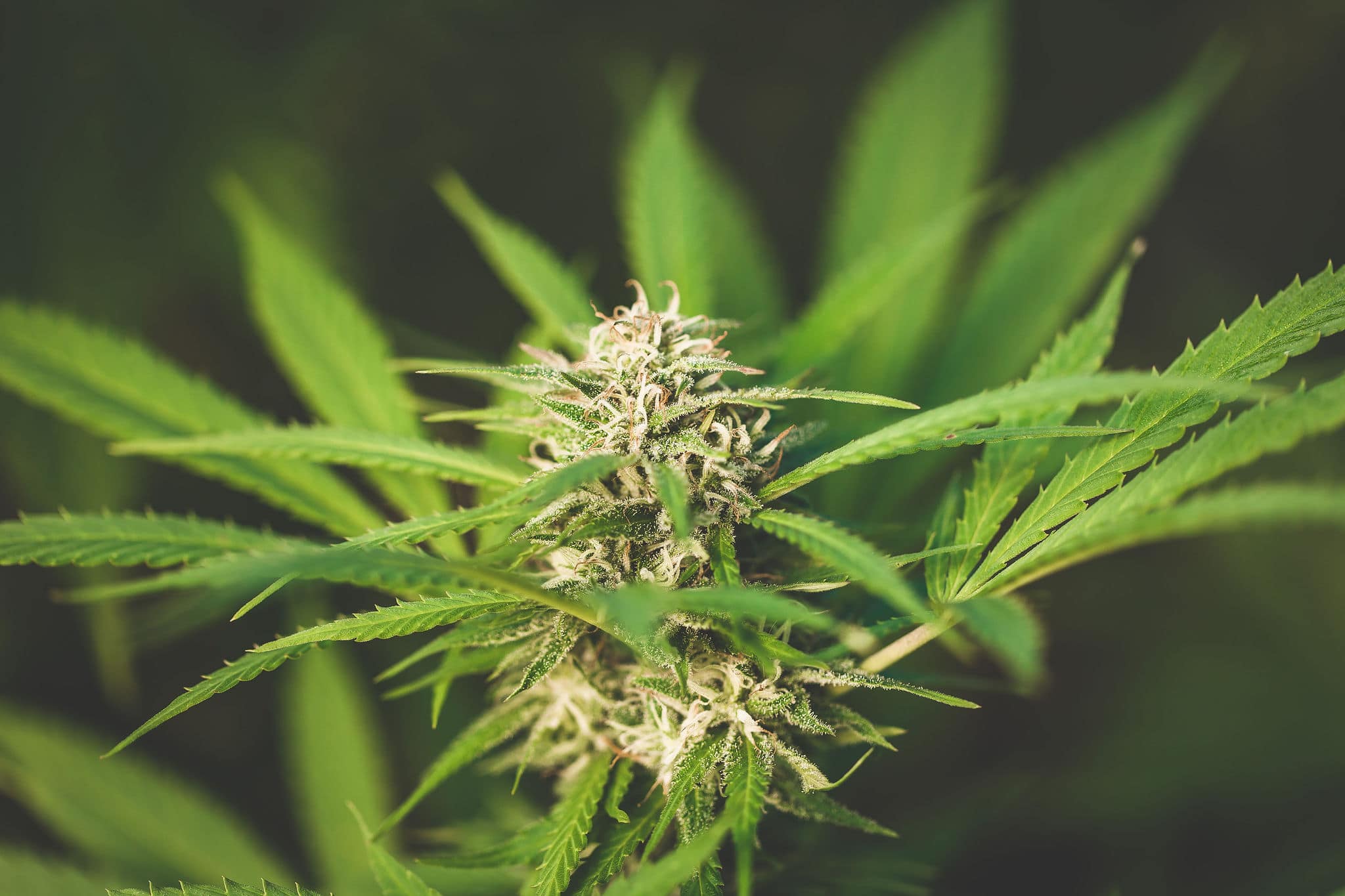
Different Forms of THC
THC is among the 500 distinct substances and 100 different cannabinoid compounds found in the trichomes of the female cannabis plant.
It is a cannabinoid, a type of chemical that reacts with the body’s endocannabinoid system.
The compound is responsible for stimulating neurons that regulate thinking, time perception, memory, coordination, and pleasure simply by reacting with cannabinoid receptors in the brain.
THC can come in many different forms based on the physical structure of the compound.
When using cannabis products, you will most commonly find THC being used to describe the most common form Δ or delta-9 THC.
However, there is also delta-8 THC, delta-10 THC, delta-11 THC, THCA, THCV, and more.
Understanding the many forms of THC is critical because they all have different properties and benefits.
Delta-9 THC
THC stands for Δ9-tetrahydrocannabinol or Δ9-THC in abbreviated form.
It’s a component in marijuana that causes the plant’s euphoric effects. When you feel high after using marijuana, it’s because of the THC.
Some research has shown that THC is useful in treating various medical conditions in some studies.
This compound can make you feel good while also providing euphoria and relaxation; thus, it’s suitable for recreational use.
It is important to know that the way you consume THC will create different effects.
Consuming THC edibles can produce stronger, more intoxicating effects than smoking, vaping, or tinctures.
On the flip side, THC topicals may not produce any intoxicating effects at all.
Delta-8 THC
Delta-8 THC occurs naturally in the cannabis plant in very small amounts.
It can be created in a lab using questionable practices to produce large amounts of D8 for consumption.
Like traditional THC, delta-8 THC has psychoactive effects, however, it is less potent than Delta-9 THC.
Delta 10 THC
The cannabinoid delta-10 THC is found in trace amounts in the marijuana plant.
Although it is less potent, it can get you high in the same way that delta-9 does.
Delta-10 THC is very new to the cannabis scene, but it has become increasingly popular among consumers.
THCA
THCA is short for tetrahydrocannabinolic acid.
It is the one form of cannabis that will not get you high, thus making it OK for children to be around growing plants.
When the cannabis plant grows in the ground, it doesn’t immediately contain high amounts of THC, it actually contains THCA.
It is the process of decarboxylation that converts THCA into THC.
THCA is non-intoxicating, meaning it won’t get you high, but it does have many potential health benefits.
You can choose to make a THCA tincture that won’t make you high but still provide many health benefits.
THCV
THCV, unlike traditional Δ9THC, is non-intoxicating and does not cause a ‘high’ feeling, but it does have a reputation for being a weight-loss tool.
Strains high in tetrahydrocannabivarin, also known as THCV, are believed to be best for managing munchies and suppressing appetite.
Unfortunately, THCV is a minor cannabinoid, meaning it is not found in all cultivars and it can be hard to come by.
There are only a handful of strains that have measurable higher amounts of THCV, and at that, it’s usually still less than 5% THCV.

Benefits of THC
THC offers numerous benefits. Anecdotally, members of my Well With Cannabis Community report it has assisted them with the following:
- Relieving pain
- Low appetite
- Nausea
- Insomnia
- Muscle spasticity
- Glaucoma
- Anxiety
Side Effects of THC
While THC is beneficial, it also has some unwanted effects if overused.
The most common unwanted side effects of consuming too much THC include the following:
- Disorientation or dizziness
- Short-term memory issues
- Slow reaction time
- Drowsiness
- Anxiety
- Heart-palpitations
- Tachycardia (rapid heartbeat)
- Increased appetite with dry mouth
- Digestive distress like diarrhea
- Red eyes
The best way to avoid experiencing these unwanted symptoms is to limit the amount of THC you consume.

How to Dose THC
Everyone responds to cannabis differently, and so many factors influence that response, including how you use it.
That is why it is essential to stay patient and take your time to discover your ideal dose according to your body’s tolerance.
It’s important to remember that the ideal milligram serving size can vary from one person to another.
Some people get high with as little as 2mg of THC; others do so at 30mg; others won’t feel the effect until the dosing is past 100mg or more, or not at all.
How long the effects will last is unique to each person as well. This is all based on your tolerance.
Many factors can impact your tolerance, including weight, metabolism, what you’ve eaten, and more.
That is why it is crucial to follow the golden rule: start low and go slow.
This means that you start with a low milligram dose, typically around 3-5 milligrams, and you wait three or more hours before taking another dose to assess your reaction.
This helps to ensure you do not take too high of a dose on your first try and end up consuming too much THC and having an unwanted reaction.
If you accidentally consume more THC than your body can handle, you may experience the unwanted side effects outlined above.
While there are ways to come down from a bad high, the best option is to prevent this from happening in the first place by not consuming too much.
Remember that other factors such as terpenes, whether the strain is an Indica vs. Sativa, and other cannabinoids like CBD can also impact your experience.
Frequently Asked Questions
This will depend on where you live, but you do not need a medical marijuana card to purchase THC products from my online shop.
Conclusion
Overall, THC is safe and can be beneficial to your health, but always check with your doctor before using it to avoid potential harmful effects.
Have any more questions about THC? Leave them in the comments section below!
Shop For THC Products
Shop with Emily
Shop Now: Bliss Micro Gummies
Shop with Emily
Shop Now: Bliss Cannabutter
Shop with Emily
Shop Now: Bliss MCT Oil
Shop with Emily
Shop Now: Bliss Gummies
Shop with Emily

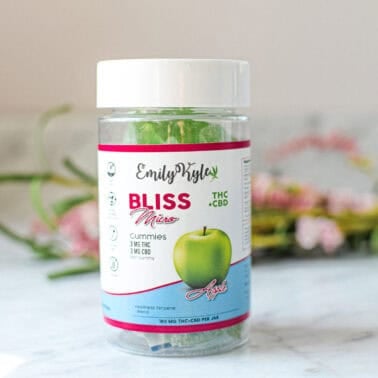
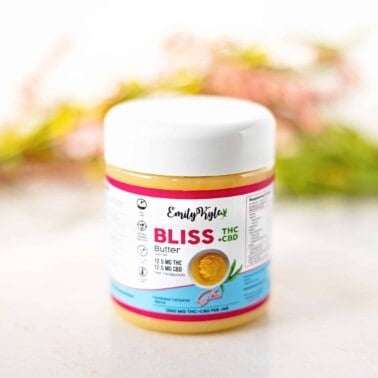
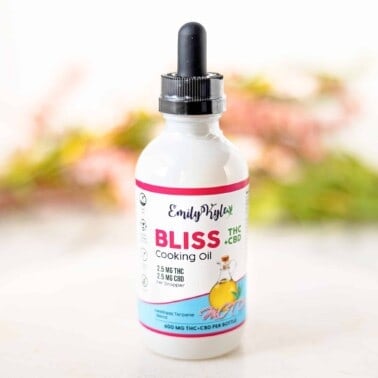











I’m 73 and have been into and around cannabis for well over 50 years. I remember the “brick weed” that leaked half its weight in seeds that we’d trash and end up paying for a 20 gram ounce. I’m happy to live in a state that has legalized cannabis. I’m also happy that there is lots of information available like what you have provided about THC and other cannabinoids.
Also, I cannot smoke anything anymore, so your guides about dearb’ing and edibles and advice were so very helpful after finding out in the mid 2010s that I have rheumatoid arthritis. CBD, CBG and THC are important items in my toolbox to treat that nasty autoimmune disease.
Thanks, Emily & Renee!
Jim
Thank you so much for sharing your story, Jim! We’re so happy that Emily’s guides have been helpful for you! It’s always inspiring to see how others are using cannabis knowledge to manage their health. Wishing you continued relief and wellness! Thank you for being here with us!
Hi Emily. So happy to have found your site. I have chronic pain and seizures from a brain tumor I hope to find some relief with your help. Thank you
Hi Taunda, thank you so much for your comment! I’m so sorry to hear about what you’re going through, and I truly hope the resources here can bring you some relief. Don’t hesitate to reach out with any questions or for support along your journey. Wishing you all the best!
The Bliss gummies help with my knee pain I don’t know if I would have help without the gummies
I’m so happy to hear that the Bliss gummies are helping with your knee pain, Ricki! It means so much to me to know they’re making a positive difference for you. 😊
Hi. I made feco from qwet. I started with 28g of decarbed bud(guessing 20%thc and 5% cbd and 6oz of ever clear. Wondering what the values would be per ml of feco.
Also did the same for green dragon with same values. Would be extremely thankful for any help with calculations
To calculate the values, start with 28g of bud at 20% THC and 5% CBD, which gives 5600mg THC and 1400mg CBD. After accounting for a 12% decarb loss, you’re left with 4928mg THC and 1232mg CBD. If you used 6oz (177ml) of Everclear and reduced it all the way down to FECO, divide those totals by your final volume to get the potency per ml. For Green Dragon, divide the same totals by the final liquid volume. Hope this helps!
I didn’t think to mention. All of my trim is home grown. Most of the different strains were all mixed together. I have no idea what the THC levels would be.
I have butter I’ve already made. It’s been declared. I used 1 Oz trim to 1 pound butter. I’m having trouble figuring out how to calculate what my strength is.
Do you have a link to making infused oil. When I use butter to replace oil in boxed brownie mix they are way to strong.
I love your page its already been helpful. Thank you for all you do.
Thank you so much for your kind words, Virginia! I’m glad to hear you’re finding our site helpful! 😊
To calculate the strength of your butter, you can start by estimating the potency of the trim you used. You can use our online calculator, but I’ll break it down quickly for you. For example, if your trim has around 10% THC, that would mean 1 gram of trim contains approximately 100 mg of THC. You lose about 12% during decarboxylation. Since 1 ounce is roughly 28 grams, your butter would have around 2,800 mg of THC in total (assuming full extraction) – 12% due to decarb, making it 2,464 mg. Divide that by the number of servings you make with the butter to estimate the strength per serving. Click here to access our online calculator here.
For infused oil, I recommend checking out this helpful guide: https://emilykylenutrition.com/cannabis-coconut-oil/. Replacing butter with oil in recipes can definitely help control the dosage. If the brownies are coming out too strong, try using less infused butter and mixing it with regular butter to reduce the potency.
Let us know how it turns out, and feel free to ask if you have more questions. Happy cooking! 🍪
Hello Emily .My name is Mike Hurlow .I’m 66 years old and I love my THC and I love gummys I was paying them off of a friend that got them from a shop .But he doesn’t get them much anymore ..But I can get the T H C oil now and I like to try and make my own .And I was wondering if I could get a ease way how to make my own gummys and I was wondering if you could tell me how to make them for myself I have a lot pain from where I use to work as a painter and now I’m I can not work no more so I need help with this if you could help me it would be very helpful .Thank you . you can email me if you like again Thank you
Thank you for reaching out, Mike! It’s great to hear you’re interested in making your own gummies. I understand how important it is to find relief for your pain. I recommend checking out this guide for making cannabis gummies: Cannabis Gummies Made with Oil or Butter. It provides a simple and easy-to-follow method that should help you get started. If you have any more questions, feel free to reach out. Wishing you the best of luck with your gummy-making journey!
Thank you so much for sharing your knowledge. I’ve been smoking pot for many many years and all of this new stuff is confusing to us “old school” people.
I look forward to learning more from your posts and your fans questions. They help a lot.
Thanks again ☺️
You are so sweet, thank you for your kind words, Beth! I am so happy you are learning so much while you’re here. Don’t hesitate to reach out if you have any questions at all ☺️
Thank you for your great website Emily! I understand what higher levels of THC will do if you ingest it, but what about for making topicals? Would indica strains with higher THC levels give more pain relief than lower THC percentages, and since it’s applied topically, does it really matter if you use indica or sativa strains (since you’re not ingesting or inhaling it)? I’m sure the amount of FECO I use in my salve will affect the strength of the salve, but I’m not sure about choice of plants. Thank you for any advice!
Hey Jen! Thank you so much for your kind words. Topicals are a totally different experience when it comes to intoxication levels. THC applied directly to the skin will not make you feel high like eating edibles would, but it can help with pain relief, so going for a higher amount of THC is OK if you want to experiment. Its not likely you will notice a big different between Indica vs. Sativa strains with topical products, but not impossible either 🙂
Hey I see THC helping with glaucoma was mentioned in the article. Could you explain how that works or anything that might help me. I have early stage of glaucoma. Thank you. 61.
Hey Earl – here is a great article to help get you started learning more about how to use cannabis with glaucoma.